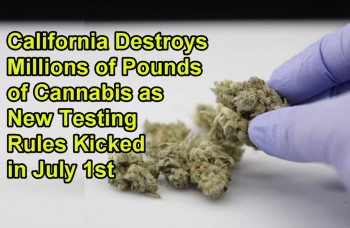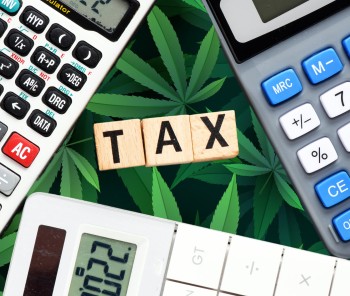
What does a healthy relationship with cannabis look like?
With the recent artice on Cannabis.net titled, "Cannabis Use Disorder Is Now a Real Thing?" getting so many comments and shares, it made me wonder, if too much weed is a disorder, what is a healthy, "thumbs up", relationship with cannabis look like?
What is the ideal relationship between users and the substances they use? Whenever I hear about “Marijuana Use Disorder” or “the person has an unhealthy relationship to cannabis”, it makes me wonder, “what is a healthy relationship according to science, users, etc?”
What’s the average consumption of cannabis users? Do we have any real world data on that? Compared to the DSM-V, how many average users would be considered “heavy users”?
This is what we’ll explore in today’s article and more, and more importantly, create an accurate depiction of a “healthy” cannabis relationship.
What does the DSM-V say about Marijuana Use Disorder?
In our quest to define a healthy relationship with cannabis, it's important to consider the perspective of authoritative sources like the Diagnostic and Statistical Manual of Mental Disorders, Fifth Edition (DSM-V). I personally am not a big fan of the manual, however, I do recognize the need to list and try to define disorders on a psychological and clinical scale. Unfortunately, this is the only manual of the kind. This manual is widely recognized as a comprehensive guide to mental health conditions, providing a standardized framework for diagnosis and classification.
When it comes to cannabis, the DSM-V introduces the concept of "Marijuana Use Disorder." This term is used to describe a range of behaviors associated with problematic cannabis use, often characterized by impaired control, social impairment, risky use, and withdrawal symptoms when use is reduced or stopped.
The DSM-V categorizes the severity of Marijuana Use Disorder based on the number of symptoms experienced. Mild Marijuana Use Disorder entails experiencing two to three symptoms, while moderate involves four to five symptoms, and severe involves six or more symptoms.
Some of the symptoms listed in the DSM-V include unsuccessful efforts to cut down or control cannabis use, spending a significant amount of time obtaining, using, or recovering from the effects of cannabis, and giving up or reducing important activities due to cannabis use.
It's important to note that the DSM-V doesn't necessarily label all cannabis use as problematic. Instead, it focuses on patterns of behavior that may indicate an unhealthy relationship with the substance. Context, frequency, and impact on daily life are key factors considered in assessing whether someone may have Marijuana Use Disorder.
While the DSM-V provides valuable insights, it's essential to remember that not all cannabis use falls under the category of disorder. A significant portion of users have a healthy relationship with cannabis, using it responsibly and without negative consequences. To truly understand a healthy cannabis relationship, it's necessary to consider a broader spectrum of factors beyond diagnostic criteria.
Here’s a list of all “problematic behaviors” that if you were to have a majority of them, would classify you as MUD:
-
Unsuccessful efforts to cut down or control cannabis use.
-
Spending a significant amount of time obtaining, using, or recovering from the effects of cannabis.
-
Craving, or a strong desire or urge to use cannabis.
-
Failing to fulfill major role obligations at work, school, or home due to cannabis use.
-
Continued cannabis use despite having persistent or recurrent social or interpersonal problems caused or exacerbated by the effects of cannabis.
-
Giving up or reducing important social, occupational, or recreational activities because of cannabis use.
-
Using cannabis in situations where it is physically hazardous.
-
Continued cannabis use despite knowledge of having a persistent or recurrent physical or psychological problem that is likely to have been caused or exacerbated by cannabis.
-
Tolerance, as defined by either needing markedly increased amounts of cannabis to achieve intoxication or desired effect or markedly diminished effect with continued use of the same amount.
-
Withdrawal, as manifested by either the characteristic withdrawal syndrome for cannabis or using cannabis (or a closely related substance) to relieve or avoid withdrawal symptoms.
Okay, so now let’s look at what the average consumer consumes.
Average User Consumption
Determining the average amount of cannabis consumed per week can be quite complex due to factors like differing legal regulations, social stigmas, and the varying potencies of products available. However, by analyzing data from various sources, we can gain some insights into the average consumption patterns of cannabis users.
According to surveys conducted in states where cannabis is legal, the average cannabis user consumes around 0.5 to 1 gram per day, which translates to approximately 3.5 to 7 grams per week. This estimation is based on self-reported data and can vary widely among individuals, taking into account factors such as frequency of use, method of consumption, and individual tolerance levels.
Sales data from legal cannabis markets also provides some insights. For instance, in states where cannabis is legal, dispensaries often sell products in measurements of grams or eighths of an ounce (3.5 grams). This suggests that many consumers are purchasing quantities in the range of 3.5 to 7 grams per transaction, which could last them a week or more.
It's important to note that these statistics can vary based on the individual's usage habits, whether they are occasional or regular users, and the intended purpose of consumption (recreational or medicinal). Moreover, cultural differences and shifts in attitudes towards cannabis may influence consumption patterns.
As cannabis legalization continues to evolve and more accurate data becomes available, we can expect a clearer picture of average consumption patterns to emerge. Additionally, the increasing availability of lower-dose products, such as edibles with precise THC content, may also impact the way users regulate their consumption.
Either way, we can assume that the average consumer smokes between a half to a full ounce per month.
Heavy Use
According to a recent Huberman Lab Podcast, “heavy marijuana use” is defined as more than twice per week. [Source]
Considering that the average user smokes between 3.5 grams – 7 grams per week, this would mean that the “average cannabis user” is a “heavy cannabis user” according to Huberman. How do I come to this calculation?
Simple really!
Considering that a single joint is about 0.9 grams of cannabis, 3.5 grams would roughly translate to five joints. As an experienced cannabis user, I can tell you that I won’t smoke a full joint in a single session.
This means that my joint lasts maybe the whole day. Using this as a base, we can assume that the average consumer consumes between 5-7 joints per week, or daily. Sometimes twice a day. Sometimes all throughout the day.
The vast majority of consumers then are “heavy consumers”. This is strange to me, because in the same podcast with Huberman, the assumption is that heavy use increases the possibility of schizophrenic or Bi-polar episodes later in life.
But if the vast majority of users are indeed, “heavy users”, shouldn’t we see a similar rise in diagnoses of Bi-Polar Disorder and Schizophrenic disorders?
In order to answer this question, I believe the best bet would be to analyze the data from states such as Colorado or California, compare the pre-legalization data with post-legalization data, remove factors such as “diagnostic techniques and classifications” and how they have changed over the years…and see if there is indeed correlation between cannabis use and these mental health issues.
However, finding this data is complicated. I have looked and there is no clear source on this, which makes me question the validity of the studies that claim that cannabis has an impact on these issues. If they are only using small sample sizes, and not correlating it with the overall statistics within region, I wonder about the accuracies of their assessments.
Irrespective of these issues, from what I had found, there wasn’t a statistically significant increase post legalization.
Do with that what you will.
What does a Healthy Relationship with Cannabis look like?
A healthy relationship with cannabis is characterized by balance, mindfulness, and a conscious understanding of its effects on physical, mental, and emotional well-being. It involves using cannabis as a tool to enhance certain aspects of life rather than as a means of escaping or numbing challenges. Here's what a healthy relationship with cannabis may look like:
Moderation: A key element is using cannabis in moderation. This means avoiding excessive consumption that could lead to impairment, decreased productivity, or negative health effects. Users are conscious of their limits and aim to maintain control over their consumption.
Purposeful Consumption: Individuals with a healthy relationship to cannabis use it with intention. Whether for relaxation, creativity, pain relief, or spiritual exploration, they have a clear purpose for their use and are aware of how it aligns with their goals.
Mindful Awareness: Healthy cannabis users are attuned to the effects it has on their mind and body. They pay attention to how different strains, doses, and consumption methods impact them, making adjustments as needed to achieve the desired outcome.
Open Communication: Users in a healthy relationship with cannabis are open to discussing their usage with friends, family, and healthcare professionals. Of course, sometimes our social situations doesn’t allow for this open communication, however, if cannabis no longer is “taboo”, it becomes more manageable as a behavior. You can give it a “place” in your life.
Maintaining Priorities: Responsibilities and commitments come first. Healthy cannabis users ensure that their cannabis consumption does not interfere with their work, relationships, or daily activities. If you use it for pain management, of course this will mean that you consume prior to activities – but anyone who uses cannabis for pain management knows that the “weed hits differently”. Nonetheless, getting shit done is absolutely key to being a healthy stoner.
Self-Awareness: They have a good understanding of their own tolerance levels and vulnerabilities. This self-awareness enables them to make informed choices about consumption and recognize signs of any negative impact. For example, if you notice you’re smoking more than usual, you may want to stop and consider what’s going on in your life. What is causing additional stress? Dealing with the real issues in your life as opposed to “smoking them under the rug”, is what constitutes a real healthy relationship.
For example, sometimes, I abstain from smoking to recalibrate myself, to test myself, etc…I eliminate cannabis from my daily behavioral activities to see if it has an impact on my psycho-spiritual wellbeing. It’s typically never the cannabis that interferes with my ability to perform, but sometimes cannabis can make it harder to spot the source of origin. A bit of abstinence can help you recalibrate, and once dealt with, you can return to typical consumption patterns.
Avoiding Dependency: Individuals with a healthy cannabis relationship do not rely on it as a sole coping mechanism. They have a range of tools and strategies to manage stress, anxiety, or other challenges. Do yoga, go to the gym, go for walks, etc. Don’t just have cannabis as your means of escape, have natural ways to do it. I use breathwork, meditation, and exercise as key factors to keep me balanced.
Respect for Others: Healthy users are considerate of those around them. They avoid imposing their cannabis use on others and respect non-users' preferences and boundaries. This is just basic manners, if you don’t know how to behave with your substance…you’re an idiot. Cannabis users that “don’t give a fuck”, are the ones that give the art of consumption a bad name.
Some people don’t like weed, if you can’t “not smoke” for a few hours or days because of them, then you have become dependent on weed.
The Sticky Bottom Line
The biggest problem with academia telling users “what good use” is, is that the majority of them have no idea about what it means to be a regular user. They take sample groups, compare data, make conclusions.
This is nice for certain things, but for example, not understanding that the majority of users consume roughly a half ounce to a full ounce a month, meaning they consume more than what is considered “heavy”, is a blindness academia cannot comprehend.
Heavy use for them is twice a week. A regular user says, “I smoke daily!” and they do not have a problem with cannabis. This is why I wrote this article, to show you that there are ways to smoke “heavily” and still remain in a healthy relationship with the plant.
Hopefully, this gave you some perspective.







